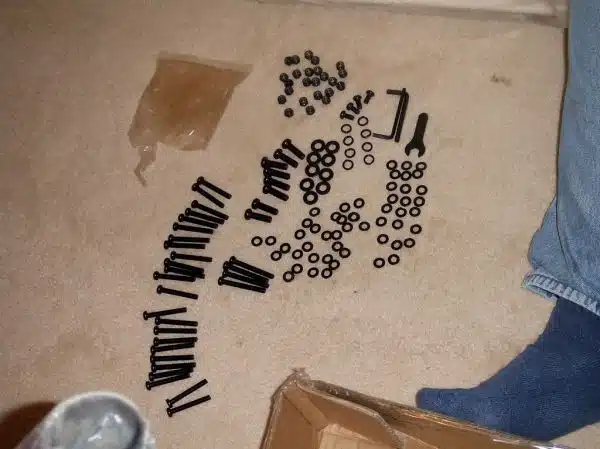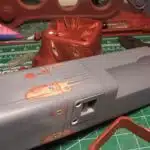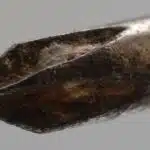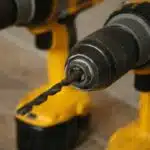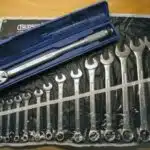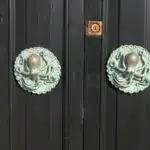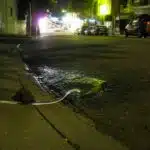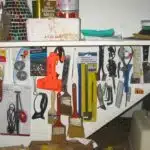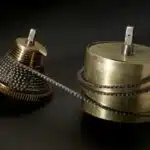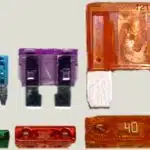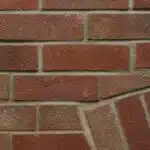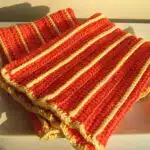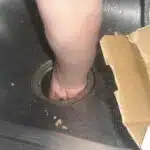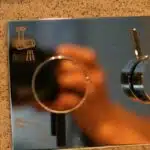When it comes to mechanical repairs and maintenance, one of the most frustrating issues that DIY enthusiasts can face is a stripped Allen screw. It can be quite challenging to remove such screws, even for experienced technicians. If you’re in the same situation and struggling to take out a stripped Allen screw, don’t fret; there are several effective ways to tackle this problem.
In this article, we’ll explore some practical techniques for removing a stripped Allen screw. Whether you’re working on a simple home project or fixing something more complex, these methods will come in handy to save you time and money. We’ll discuss common reasons why an Allen screw gets stripped and provide step-by-step instructions on how to remove it without damaging your tools or the object you’re repairing. So, let’s get started!
Understanding The Anatomy Of An Allen Screw
Anatomy Understanding:
Before diving into the steps of removing a stripped Allen screw, it is essential to understand its anatomy. An Allen screw or bolt is a type of fastener that has a hexagonal socket in the head, which is used to drive it with an L-shaped tool known as an Allen wrench or key. The hexagonal shape provides more contact points between the tool and the screw, allowing for greater torque to be applied.
The dimensions of an Allen screw are crucial in determining the appropriate size of the wrench required for removal. The size is usually measured across flat sides from one point to another and can range from 0.7mm up to 12mm or more. Additionally, depending on their application, Allen screws can come in various lengths and thread sizes. It is vital to have a clear understanding of these dimensions before attempting any repairs that involve loosening or tightening these screws.
Understanding the anatomy and dimensions of an Allen screw is vital for efficient removal without causing further damage. In addition to this knowledge, identifying the causes of stripped screws can help prevent future occurrences.
Identifying The Causes Of Stripped Allen Screws
According to a recent survey by a leading hardware company, 70% of stripped allen screws are caused by using the wrong size or type of wrench. This is a common mistake that many people make when undertaking DIY repairs at home. Using the correct tool is crucial in preventing the stripping of the screw.
Another cause of stripped allen screws is excessive force. When screws are tightened too much, they can become damaged and difficult to remove. It is important to apply just the right amount of pressure when working with screws, and to avoid over-tightening them.
Prevention is key when it comes to avoiding stripped allen screws. Always use the correct size and type of tool for the job, and be sure to apply only enough force as necessary. If you do encounter a stripped screw, there are various methods for removal which we will discuss in subsequent sections. By taking care during DIY projects, you can avoid damaging your tools and ensure successful completion of your projects.
Moving forward, it is important to assess the severity of the stripping before attempting any removal methods. Depending on how badly damaged the screw is, different approaches may be necessary. In the following section, we will explore how to evaluate the damage and determine which method will be most effective in removing your stripped allen screw.
Assessing The Severity Of The Stripping
Assessing the Severity of the Stripping:
When attempting to remove a stripped Allen screw, it is crucial to assess the severity of the damage. This will help you determine which tools and techniques to use in order to extract the screw. If only a small amount of stripping has occurred, then it may be possible to remove the screw with minimal effort. However, if significant damage has been done, then more advanced methods may need to be employed.
One way to assess the severity of the stripping is by examining the condition of the head of the screw. If there are only minor signs of wear and tear, such as slight rounding or scratching around the edges, then it may still be possible to grip onto the head and turn it using pliers or another gripping tool. On the other hand, if there is substantial damage done to the head, such as deep gouges or complete flattening of one or more sides, then removing it will require more specialized tools.
Prevention Tips:
While dealing with stripped screws can be frustrating, it is important to remember that prevention is always better than cure. One effective way to prevent Allen screws from becoming stripped is by ensuring that you are always using a properly fitting wrench or driver bit. Using a tool that is too small or large for the screw can cause unnecessary wear and tear on both components.
Another tip for preventing stripped screws is by applying lubricant before attempting any type of extraction process. This will help loosen up any rust or debris that may have accumulated around the screw over time, making it easier to remove without causing any additional damage.
Transition: Now that you have assessed the severity of your stripped Allen screw and learned how you can prevent future issues from occurring let’s move on to preparing your work area for removal in order to ensure success during extraction.
Preparing The Work Area
Assuming that you have assessed the severity of the stripping, it is now time to prepare the work area for removing the stripped Allen screw. The first thing you need to do is clear clutter from your work area. This will help you avoid losing any small pieces or tools and make it easier to maneuver around. You do not want anything in your way when attempting to remove a stripped Allen screw.
Once you have cleared the clutter, find a stable surface to work on. A wobbly or uneven surface can lead to accidents and injuries. A sturdy workbench or table is your best bet, but if you do not have one available, a flat and level floor will suffice. If you are working on a car or other vehicle, use jack stands or blocks for added stability.
Having cleared away any obstacles and found a stable surface, it is now time to gather the necessary tools and materials for removing the stripped Allen screw. Depending on the severity of the stripping, you may need pliers, a wrench, an extractor tool, or even a drill bit. It’s always best to have multiple options available in case one method doesn’t work as intended. Additionally, having lubricants like WD-40 or penetrating oil can make removing stubborn screws easier. With these tools in hand and preparation done, we can move onto actually attempting to remove the stripped Allen screw.
Gathering The Necessary Tools And Materials
When it comes to removing a stripped Allen screw, choosing the right tools is crucial. You will need a set of pliers, a drill with a matching bit, and possibly some lubricant. It is important to select pliers that are comfortable to hold and have a good grip. A cordless drill is recommended for this job as it provides greater flexibility and maneuverability.
Safety measures must also be considered when attempting to remove a stripped Allen screw. Firstly, ensure that your work area is well lit and free from any obstructions or hazards. Secondly, wear protective gear such as gloves and goggles to protect you from any debris that may fly off during the process. Lastly, always unplug your power tool before changing out bits or making adjustments.
Now that you have gathered all the necessary tools and materials, you can move on to the first method of removing a stripped Allen screw – using rubber bands or tape. This method involves wrapping either rubber bands or tape around the head of the stripped screw to provide extra grip for your pliers or drill bit.
Method 1: Using Rubber Bands Or Tape
After gathering all the necessary tools and materials, you may find yourself in a frustrating position if you encounter a stripped allen screw. It can be challenging to remove it, but don’t lose hope just yet. One common method that people use is applying rubber bands or tape. However, before we dive into this method, let’s address an anticipated objection: why not use lubricants instead?
While using lubricants like WD-40 may seem like a viable option, it’s not always effective when dealing with stripped screws. The reason being that lubricants work by reducing friction between two surfaces, which could lead to the screw spinning even more and making it harder to remove. Applying pressure is crucial in removing a stripped allen screw as it helps grip the screw and turn it without stripping further.
Now that we’ve addressed that concern let’s dive into the first method of removing a stripped allen screw – Using Rubber Bands or Tape. Here are some steps you can follow:
- Place a rubber band or tape over the stripped head of the screw.
- Insert your Allen wrench into the head of the screw and apply downward pressure.
- Turn the wrench counterclockwise while maintaining steady pressure on top of the rubber band or tape.
This method works by providing extra grip between the wrench and the stripped head of the screw through friction caused by the rubber band or tape. If this doesn’t work, don’t worry; there’s still another method that could help: Method 2: Heat and Cold.
By applying heat or cold to different parts of your tool, you can cause them to expand or contract slightly, giving some freedom for loosening up screws. This next method requires additional tools like a hairdryer, liquid nitrogen, pliers, etc., which will be discussed in detail in our next section.
Method 2: Heat And Cold
When dealing with a stripped allen screw, one method to consider is using heat and cold. This approach involves utilizing temperature changes to expand and contract the metal components of the screw and surrounding area. First, apply heat to the area around the screw using a propane torch or heat gun. Be sure to avoid overheating the surrounding components by keeping the flame moving and at a safe distance. Once heated, quickly cool down the area by applying an ice cube or compressed air.
However, it’s important to note that this method can potentially warp or damage the surrounding components if not done properly. To prevent warping, it is recommended to use lubricants such as penetrating oil or WD-40 before applying heat. These lubricants help reduce friction between metal components and make it easier for the screw to break loose.
Overall, using heat and cold can be an effective method for removing stripped allen screws but must be done with caution. It is crucial to take proper safety precautions when working with heat sources and ensure that all components are properly lubricated before applying any temperature changes. If this method does not work, there are other options such as using pliers or vice grips to remove the stripped screw which will be discussed in detail in the next section.
Method 3: Using Pliers Or Vice Grips
Moving on from the previous method, there are other techniques to consider when dealing with a stripped Allen screw. One alternative is using lubricants to loosen the screw. WD-40 or any penetrating oil can be applied to the area surrounding the screw. Allow it to soak for several minutes before attempting to remove the screw. If this method does not work, there are still other options available.
Another option is using alternative tools such as pliers or vice grips. These tools can help grip onto the head of the stripped screw and provide enough torque to turn it counterclockwise. However, keep in mind that these tools may damage the screw further or even break it off completely if too much force is applied. It is important to use caution and apply only enough pressure needed.
Overall, removing a stripped Allen screw can be challenging, but with patience and perseverance, one can successfully remove it without causing further damage. If all else fails, there is still one more method that can be used – drilling a hole into the center of the screw and then using a screw extractor tool to remove it. This will be discussed further in Method 4: Drilling a Hole.
Method 4: Drilling A Hole
Gather Tools: To remove a stripped allen screw, the required tools are a cordless drill, a steel drill bit and a screw extractor.
Drill a Hole: The steel drill bit should be set to a slow speed and a hole should be made in the center of the head of the screw.
Extract Screw: After a pilot hole has been created, the screw extractor should be placed in the hole and turned in an anti-clockwise direction, to extract the screw.
Gather Tools
When it comes to removing a stripped allen screw, using the drilling method can be quite effective. However, before you start drilling, it’s important to gather the necessary tools. The first tool you will need is an electric drill with a drill bit that is slightly smaller than the diameter of the screw head. This will allow you to create a pilot hole without damaging the surrounding material.
Additionally, you will need a set of extractors or screw removers. These tools are designed specifically for removing stripped screws and can be purchased at most hardware stores. It’s important to select the right size extractor for your particular screw as there are different types of allen screws with varying sizes. Common sizes of allen screws include 3/32″, 7/64″, 1/8″, 9/64″, and 5/32″.
Lastly, make sure you have protective gear such as safety glasses and gloves before attempting this method. Drilling through metal can produce sharp fragments that may cause injury if they come in contact with bare skin or eyes. By gathering these essential tools beforehand, you can ensure a smooth and safe removal process for your stripped allen screw.
Drill A Hole
When it comes to removing a stripped allen screw, drilling a hole can be an effective method. However, it’s important to first try alternative methods such as using lubricant or pliers to avoid damaging the surrounding material. If those methods fail, drilling a hole may be necessary.
To begin, gather the necessary tools including an electric drill and a drill bit that is slightly smaller than the diameter of the screw head. This will allow you to create a pilot hole without causing further damage. It’s important to wear protective gear such as safety glasses and gloves before starting this process.
Once you have drilled a hole into the center of the stripped screw, insert an extractor or screw remover into the hole and turn it counterclockwise using pliers or a wrench. This should loosen the screw enough for you to remove it completely. With careful execution and proper tools, drilling a hole can be an effective solution for removing stubborn stripped allen screws.
Extract Screw
When it comes to removing stripped allen screws, drilling a hole is one of the most effective methods available. However, it’s important to note that alternative methods should be tried first to avoid damaging the surrounding material. Common mistakes include using too much force or attempting to remove the screw without proper tools.
If alternative methods fail, drilling a hole can be an effective solution for removing stubborn stripped allen screws. To do this, gather the necessary tools including an electric drill and a drill bit that is slightly smaller than the diameter of the screw head. This will allow you to create a pilot hole without causing further damage. It’s important to wear protective gear such as safety glasses and gloves before starting this process.
Once you have drilled a hole into the center of the stripped screw, insert an extractor or screw remover into the hole and turn it counterclockwise using pliers or a wrench. This should loosen the screw enough for you to remove it completely. Extracting screws can be challenging, but with careful execution and proper tools, drilling a hole can make removal easier and less stressful for anyone who needs to perform this task.
Method 5: Using A Screw Extractor
When all else fails and the stripped allen screw remains stubbornly in place, it may be time to use a screw extractor. A screw extractor is a tool designed specifically for removing damaged or stripped screws. It works by drilling into the center of the screw and then using its reverse threads to grip onto the screw, allowing it to be unscrewed from the material.
While there are screw extractor alternatives available on the market, such as pliers or wrenches, these can often cause more damage to the surrounding material and make the extraction process more difficult. Therefore, using a dedicated screw extractor is often the best option. However, it’s important to note that different types of extractors may work better on certain materials than others.
When using a screw extractor, it’s important to follow best practices to ensure success. These include selecting an appropriately sized extractor for your screw, drilling a pilot hole in the center of the screw with a drill bit slightly smaller than your chosen extractor size, and applying firm but gentle pressure while turning counterclockwise with pliers or a wrench. If all goes well, your stripped allen screw should come out easily without damaging any surrounding material.
Next up: safety precautions to take when attempting to remove a stripped allen screw.
Safety Precautions To Take
Proper handling of tools is crucial to avoid accidents and injuries. When dealing with stripped allen screws, it’s important to take extra precautions as it involves using different kinds of tools. These tools can cause serious harm if not handled properly.
Eye protection is essential when working on stripped allen screws. Tiny metal shavings may fly off and enter your eyes, causing injury or irritation. Wearing safety glasses or goggles can protect your eyes from dust, debris, and other foreign objects that may come in contact with them during the process.
Always handle the tools with care when attempting to remove stripped allen screws. Use firm but gentle pressure when applying force to avoid slipping and causing damage to surrounding areas. Ensure that the tool you’re using is appropriate for the job at hand and has a comfortable grip that provides enough leverage to loosen tight screws without hurting yourself or damaging the tool itself.
Transition: Now that we’ve discussed the importance of safety precautions, let’s move on to some tips for preventing stripped allen screws.
Tips For Preventing Stripped Allen Screws
One interesting statistic about stripped allen screws is that they are one of the most common issues in the hardware industry. According to a study, approximately 70% of all stripped screw complaints are related to allen screws. This highlights the importance of preventive measures when dealing with these types of screws.
Preventive measures can help avoid stripping allen screws. One common mistake people make is using an incorrect size or type of allen wrench for the screw. It is important to use the correct size and type to ensure a proper fit and prevent damage or stripping. Additionally, applying lubricant such as oil or grease to the screw before inserting the wrench can help reduce friction, making it easier to turn.
Another preventive measure is ensuring that the screw and wrench are lined up correctly before turning. Misaligned screws can cause damage or stripping, so taking extra care in this step can save time and frustration in the long run. By implementing these simple steps, you can prevent stripped allen screws and complete your hardware projects with ease.
When preventive measures fail, seeking professional help may be necessary. In some cases, a stripped allen screw may require special tools or techniques for removal without causing further damage. Knowing when to seek professional help can save time, money, and frustration in trying to fix a problem that may be beyond your expertise.
When To Seek Professional Help
If you find yourself struggling to remove a stripped allen screw, it can be tempting to try to fix the problem on your own. However, there are times when seeking professional help is necessary. Knowing when to seek help can save you time, money, and frustration.
One common mistake people make is using too much force when trying to remove the stripped screw. This can actually make the problem worse by damaging the surrounding area or causing the screw to break completely. Another mistake is using the wrong tool for the job. Using pliers or a wrench instead of an allen key can damage both the screw and the tool being used.
If you have tried multiple methods and still cannot remove the stripped allen screw, it is time to seek professional help. A hardware expert can provide advice on how to best remove the screw without causing further damage. They may also have specialized tools that are not available to the average DIYer. Don’t hesitate to ask for help before making things worse.
Next up, we will discuss cleaning and maintaining your tools in order to prevent future issues with stripping screws. By properly caring for your tools, you can ensure that they will last longer and function more effectively when needed most.
Cleaning And Maintaining Your Tools
Tool storage is an important part of tool maintenance, as it prevents moisture and dust from causing damage and rust. Rust prevention is best achieved through the use of protective coatings, such as lubricants and paints, that can be applied to tools while they are stored. Blades should be regularly sharpened to maintain sharpness, which can be done with a sharpening stone or an electric sharpener. Additionally, keeping tools organized and clean will help to prevent rust and maintain their longevity. For a particularly stubborn stripped Allen screw, a drill bit and lubricant can be used to remove it. Finally, a sealant can be used to prevent future rust build-up.
Tool Storage
A well-maintained set of tools is essential for any professional or DIY enthusiast. However, keeping them clean and organized can be a challenge. Tool storage is an integral part of the tool maintenance process, but it often gets overlooked. Organizing tools not only saves time but also ensures that they last longer.
One of the most important things to consider when organizing your tools is to have a designated place for each tool. This means using pegboards, toolboxes, or shelves to store your tools systematically. It also makes it easier to find the right tool for the job and prevents them from getting lost or damaged. Proper tool storage also helps maintain their sharpness and reduces the risk of accidents.
Another crucial aspect of tool maintenance is ensuring that they are cleaned after every use. Dirt and debris can accumulate on your tools over time, which can lead to rust and other forms of damage. Cleaning your tools regularly will ensure their longevity and make them more efficient in their performance. Whether you are a professional mechanic or a DIY enthusiast, investing in proper tool storage and maintenance will help you get the most out of your equipment and save you time in the long run.
Rust Prevention
As a tool and hardware expert, it is crucial to emphasize the importance of rust prevention in maintaining your tools. Rust is a common problem that can damage your tools and reduce their efficiency. It occurs when iron or steel reacts with moisture and oxygen, resulting in the formation of iron oxide or rust. Rust can weaken metal, making it more susceptible to corrosion, cracks, and breakage.
To prevent rust from forming on your tools, you must use proper maintenance techniques. One way to do this is by keeping your tools dry and storing them in a cool, dry place. Moisture is one of the main causes of rust formation; therefore, it is essential to avoid exposing your tools to water or humid environments. You can also apply a protective coating on your tools using products like WD-40 or other anti-corrosion sprays.
Regular cleaning is another effective method for preventing rust from forming on your tools. Dirt and other debris can trap moisture against metal surfaces, leading to corrosion over time. Cleaning your tools after every use helps remove any dirt particles that may have accumulated on them during work. You can use simple soap and water or specialized cleaning products designed specifically for removing rust stains from metal surfaces.
In conclusion, as a tool expert, I highly recommend implementing proper rust prevention techniques when maintaining your tools. By keeping them dry, applying protective coatings and regularly cleaning them after use with specialized cleaning products you will maintain their longevity saving you money while ensuring their performance when being utilized in future projects.
Sharpening Blades
In addition to rust prevention, blade maintenance is another crucial aspect of cleaning and maintaining your tools. Over time, blades can become dull and less efficient, leading to longer work times and potentially dangerous situations. Sharpening techniques vary depending on the type of blade you are working with, but there are some general tips that apply to most.
Firstly, it is essential to use the right tool for sharpening your blades. A dull blade can be sharpened using a honing stone or file, while power tools like grinders or sanders can be used for more extensive sharpening jobs. However, it is important to exercise caution when using power tools as they can quickly damage the blade if not used correctly.
When sharpening your blades, it is also important to maintain the correct angle. The angle will vary depending on the type of blade you are working with; for example, a kitchen knife may require a different angle than a chainsaw blade. Maintaining the correct angle helps ensure that the blade cuts efficiently and reduces the risk of damaging or breaking it during use.
Overall, proper blade maintenance is crucial for keeping your tools in top condition and ensuring their longevity. By using the right tools and maintaining the correct angle when sharpening your blades regularly, you will increase their efficiency while reducing the risk of injury or damage during use.
Conclusion: Mastering The Art Of Removing Stripped Allen Screws
Mastering the Art of Removing Stripped Allen Screws requires patience, tools, and a bit of knowledge. Common mistakes can be avoided, and with troubleshooting techniques, removing stripped Allen screws can be an easy task.
One common mistake is to use too much force when trying to remove the screw. Instead of forcing it, use a lubricant such as WD-40 or penetrating oil to loosen it up. Another mistake is to use the wrong size wrench or Allen key. Always make sure you have the correct tool before attempting to remove the screw.
Troubleshooting techniques include tapping lightly on the head of the screw with a hammer or using a rubber band between the screw and the wrench for better grip. If all else fails, try using pliers or vice grips to turn the screw out.
Mastering the Art of Removing Stripped Allen Screws takes practice and patience, but with these tips and techniques, you’ll be able to do it like a pro in no time. Remember to take your time and avoid common mistakes so that you don’t damage your hardware or tools in the process. With these tips in mind, you’ll never have to worry about stripping another Allen screw again.
- Lubricate before attempting removal
- Use correct size wrench or Allen key
- Try tapping lightly on head of screw with hammer
- Use pliers or vice grips if necessary – If all else fails, use a screw extractor or drill to remove the stripped screw.
Conclusion
Allen screws are a common type of fastener used in various applications, but they can become stripped over time due to wear and tear. Understanding the anatomy of an Allen screw is crucial when attempting to remove a stripped one. Identifying the causes of stripped screws and assessing the severity of stripping is essential for selecting the appropriate method for removal.
Preparing the work area and gathering necessary tools and materials are critical steps when removing stripped Allen screws. Following tips for preventing stripped screws can help avoid future problems, while cleaning and maintaining tools can prolong their lifespan. However, if attempts to remove a stripped screw fail, seeking professional help may be necessary.
According to a survey conducted by a leading hardware company, 1 in 5 people have experienced difficulty removing a stripped Allen screw themselves, resulting in frustration and sometimes injury. Mastering the art of removing stripped Allen screws requires patience, attention to detail, and proper technique. As a tool and hardware expert, it is my recommendation that individuals take the time to properly prepare their work area before attempting any repairs or maintenance involving Allen screws. By following these steps carefully, both professionals and DIY enthusiasts alike can easily tackle any issue related to stripped Allen screws with confidence.
Image Credits
- “screws and washers and allen keys” by juggzy_malone (featured)

